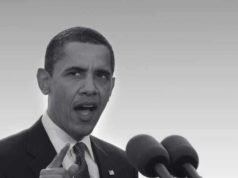
The Partial-Birth Abortion Ban Act
The Act was passed by President George W. Bush on November 5, 2003. Because of Roe v. Wade, a woman has the right to undergo an abortion because of the due process clause under the 14th Amendment. The right to have an abortion during the first trimester was an exclusive right of the mother, but the Supreme Court ruled that states could regulate abortions during the second and third trimesters.
Partial-Birth Defined
Section 5 of the Partial-Birth Abortion Ban Act defines a partial birth as the following:
“an abortion in which the person performing the abortion partially vaginally delivers a living human fetus or infant before killing the fetus or infant and completing the delivery. The terms “fetus” and “infant” are used interchangeably to refer to the biological offspring of human parents.”
Sections of the Partial-Birth Abortion Ban Act
Section 10
This section of the Act provides penalties for physicians that perform a partial-birth abortion. The section states that any person who knowingly performs such an abortion is guilty of a Class 4 felony. The penalty is not enforceable when the abortion is needed to save the mother’s life if she is endangered by a “physical disorder, physical illness, or physical injury, including a life-endangering condition caused by or arising from the pregnancy itself, provided that no other medical procedure would suffice for that purpose.”
Section 15
This section of the Act states that maternal grandparents of the fetus or infant can bring a civil action for appropriate relief for the plaintiff’s crimes or the plaintiff consented to the abortion. The grandparents can only bring forth a lawsuit if the mother was under the age of 18 at the time of the abortion. The grandparents can seek damages for psychological or physical injuries and statutory damages equal to 3 times the cost of the abortion.
Section 20
This section of the Act prohibits prosecution against the woman who had the partial-birth abortion. The mother may not be prosecuted under Article 31 or 5 of the Criminal Code of 1961 for a partial-birth abortion either.
Court Challenges of the Partial-Birth Abortion Ban Act
On November 5, 2003, a federal judge in the state of Nebraska issued a temporary restraining order against the Partial-Birth Abortion Ban Act after four doctors filed a lawsuit against the constitutionality of the law. More federal judges in New York and San Francisco issued temporary restraining order on November 6, 2003 after members of the National Abortion Federation and Planned Parenthood clinics claimed the Act was unconstitutional.
On June 1, 2004, a judge in California declared that the Act was unconstitutionally vague and struck down the Act in Stenberg v. Carhart. The case eventually reached the Supreme Court along with another case, Gonzales v. Planned Parenthood, and the Court ruled that the Partial-Birth Abortion Ban Act of 2003 was constitutional.
Sources:
1. https://www.ilga.gov/legislation/ilcs/ilcs3.asp?ActID=1929&ChapterID=53
2. https://www.nchla.org/datasource/idocuments/5PBABriefPg11c.07.pdf








































